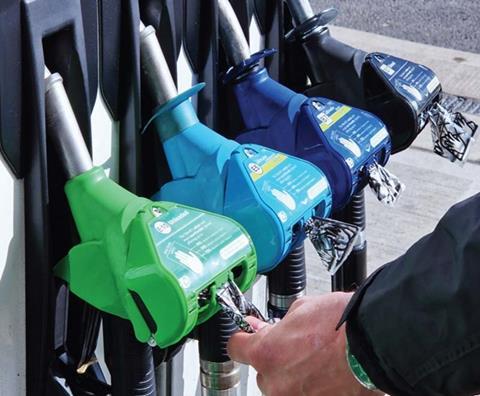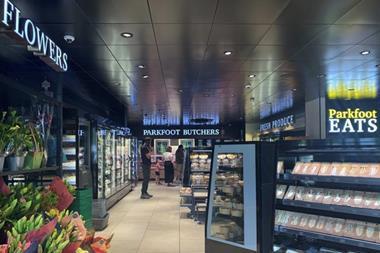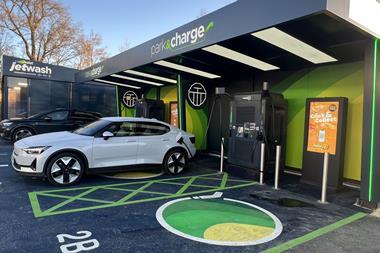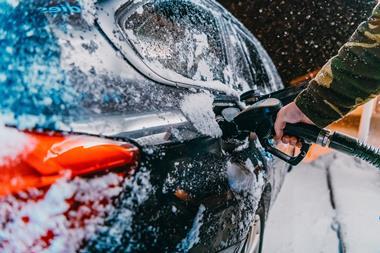
Just the other day I was filling my car with petrol when the cashier called out over the loudspeaker system asking someone to stop using their mobile phone on the forecourt.
The cashier had to ask three times before that person (not me!) stopped using their phone.
The incident got me thinking that 1) surely everyone knows that they shouldn’t use their mobile on a forecourt and 2) has using a mobile phone ever caused a fire on a forecourt.
In answer to point number one – I would have thought so, but obviously not. Perhaps it was a new driver, used to using their mobile all the time, and not used to a forecourt environment. As for point number two, when Googling my answer I found that, according to Fuels Industry UK, “no evidence linking fires to mobile phone ignition has been found”.
The organisation did go on to say that using mobile phones can create a serious distraction for people dispensing fuel or crossing the forecourt, and that mobile phones are “not designed and certified for use in explosive atmospheres which exist temporarily around the pump and nozzle during refuelling as well as around the fill and vent pipes during petrol deliveries”. It said that while the risk of sparking from mobile phones is low, they are not intrinsically safe devices and should not be used in hazardous areas that exist on a forecourt.
It’s good that that has been cleared up. However, that said, there remain many health and safety (H&S) issues at petrol stations. You’ve got the pumps, you’ve got the fuel tanks, perhaps EV charging, the vehicles and the drivers all to think about.
What is more, Philip Reese, director at Evenlode Roadside, which specialises in managing roadside retail assets, believes the term H&S should be expanded to HSS&E so it includes security and environmental too.
“This expands the risk from just that imposed on people, but similar principles apply – with the onus on the site owner/operator to prevent harm firstly, but also to avoid any potential prosecutions.”

Reese says risks present themselves to staff, the public, contractors and neighbours. And these risks include the well-known – such as technical risks as covered in the Blue Book, human factor risks such as the presence of moving vehicles and emerging risks associated with new technologies and alternative fuels. “In these cases the technology precedes the new standards, so solid principles of risk assessment and control measures are required,” he explains.
“Prominent traditional risks include wet stock and leak prevention. You just have to look at the nightmare recently on a southern England site where locals could not even use their drinking water. Then there’s the presence of flammables on site, such as fuel. The growing threats of violence toward staff and ignorance of the risks present, especially by the public.”
Reese says best practice should include:
• Designing the site with safety in mind, with a basic emphasis on following known standards such as the Blue Book, complying with building regs and the like, and applying these practically.
• Being aware of relevant legislation and how it applies, both for constructing new or upgrading existing sites.
• Taking a proactive approach to the way operations and maintenance are implemented, with a focus on prevention, rather than cure. A safe, well maintained site is often a cleaner, reliable and more attractive site for customers too.
• Selection, appointment and control of competent contractors on site – risks are much higher if they have not or don’t usually work in a forecourt environment.
“Evenlode Roadside’s team has a long history of promoting safe practices in all aspects of our services. Complementing their long experience with forecourts, many of the team have worked in prominent construction project management organisations and closely within owner/operator teams, learning from and applying approaches in other sectors. The team works across the whole property lifecycle with experience in managing safety during the design, procurement, construction and maintenance, selecting, appointing and managing competent consultants, contractors and suppliers.
“As well as a thorough grounding in the application of the CDM (Construction Design and Management)regulations, the team has in-depth experience of contractor pre-qualification, accreditation and construction safety auditing, with a focus on providing practical improvements. When in-depth specialist input is required, we have working relationships with many experts.”

Success story
One of the biggest success stories on forecourts in recent years is GripHero, the safety gloves which were launched back in 2017 simply with the aim of improving customer convenience.
Today, post-Covid, GripHero is used on over 10,000 sites globally, and is now referenced as the go-to for safeguarding and defending petrol stations from a growing number of fuel-handling injury claims.
GripHero says the size of the risk is huge as every day in the UK alone, around two million drivers handle a highly flammable category-1a carcinogenic and mutagenic substance without regulation compliant warning signage and PPE at the point of contact.
The company adds that recent landmark cases for fuel exposure and contamination/injuries have occurred, where operators have overlooked their duty to simply warn, inform, instruct and protect people at the point of contact with hazardous and carcinogenic substances.
GripHero says it uniquely provides a very quick, simple and low-cost solution: clear and highly visible regulation-compliant warning signage and static-blocking ATEX-certified safety gloves provided directly in the ATEX fuel zone-1 – the exact and first point of contact with the user.

Anti-static
The fact that GripHero gloves are anti-static is very important. Standard forms of gloves are made from materials that both generate their own static and amplify the static energy on the person, via the static phenomena of friction-charging and tribo-charging.
By contrast, GripHero’s ATEX-certified anti-static properties both prevent and block static energy from discharging between the drivers’ hands and fuelling equipment, enabling the provision of customer protection directly at the point of contact within ATEX fuel zone-1.
Luke Jenkins, GripHero’s head of client accounts, says “Over many years of specialising in protecting drivers, we have become expert in the industry in how to do forecourt customer safety correctly, uniquely safeguarding petrol stations from fuel exposure injury claims and being the go-to consult by law firms for fuel handling incidents. The fact that prioritising customer safety with GripHero also results in eliminating waste and environmental impacts, reducing operational costs and increasing shop revenue makes it a win-win for all.”
Saeed Noorani, operations manager at Top 50 Indie Sharma Garages, is just one of GripHero’s many satisfied customers. He points to even more benefits of having the gloves on site: “Not only have we seen an elimination of the waste and litter experienced with standard gloves, but now that our gloves are efficiently dispensed at the first point of contact with drivers, we can keep more of our customers hands clean before they enter the shop. This in turn helps to drive follow-on shop purchases and we have now recorded as much as 10% increase in C-store revenue since using GripHero across our sites.”



























